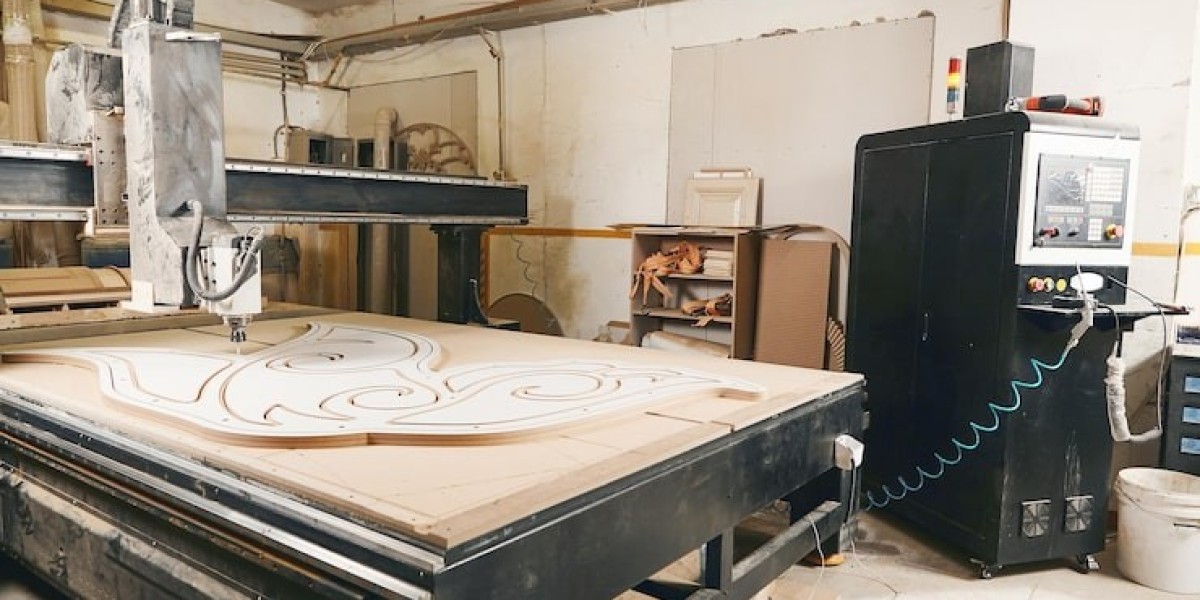In today’s woodworking industry, efficiency and precision are more important than ever. Traditional manual cutting methods often lead to errors, wasted materials, and longer project timelines. This is where a cnc wood cutting machine revolutionizes the workflow. By combining computer-aided design with automated cutting, woodworkers can achieve highly accurate results while saving time and reducing material waste. In this article, we’ll explore how CNC machines work, their advantages, and why they are becoming essential tools for both professionals and hobbyists.
What is a CNC Wood Cutting Machine?
A CNC (Computer Numerical Control) wood cutting machine is a digitally controlled device that precisely cuts, drills, and shapes wood according to programmed designs. Unlike manual tools, CNC machines follow exact instructions from computer software, eliminating human error. These machines range from small desktop units for hobbyists to large industrial setups used in furniture manufacturing and cabinetry.
The process begins with a digital design created using CAD (Computer-Aided Design) software. This design is then translated into a set of instructions, or G-code, which the CNC machine reads. The machine then uses rotating cutting tools or routers to carve the wood with high accuracy, following the programmed paths perfectly.
Key Benefits of Using CNC Machines in Woodworking
1. High Precision and Accuracy
One of the main advantages of a CNC cutting machine is its precision. It can cut intricate shapes and detailed patterns that would be extremely difficult or impossible to achieve manually. For example, complex carvings, inlays, and 3D designs can be executed consistently across multiple pieces, ensuring uniformity in production.
2. Time and Labor Efficiency
CNC machines reduce the need for manual labor and significantly speed up production. Once the design is programmed, the machine operates continuously with minimal supervision. This efficiency allows workshops to complete more projects in less time, increasing overall productivity and profitability.
3. Reduced Material Waste
Traditional cutting often results in material wastage due to mistakes or miscalculations. CNC machines minimize waste by following exact cutting paths. The precision reduces the number of errors, saving both raw materials and money. Additionally, optimized nesting techniques can maximize material usage by efficiently arranging multiple parts within a single wood sheet.
4. Versatility in Design
CNC wood cutting machines can handle a variety of wood types, from soft pine to hard oak, and can switch between different cutting tools seamlessly. This versatility allows artisans to create a wide range of products, including furniture, decorative panels, cabinetry, and signage. The ability to replicate designs perfectly also makes it easier to scale production while maintaining quality.
Practical Applications in Modern Woodworking
CNC machines are not limited to industrial settings. Small workshops and hobbyists can also benefit from these tools. For instance, furniture designers can produce custom pieces quickly, while craft enthusiasts can explore complex decorative projects without extensive manual skill. Additionally, CNC machines are widely used in architectural woodworking, allowing for detailed moldings, paneling, and joinery with professional-grade precision.
Consider a small cabinet-making business: by integrating a CNC cutting machine, the team can produce dozens of identical cabinet doors with intricate designs in the time it would have taken to cut a few manually. This level of efficiency enhances client satisfaction and boosts business growth.
Choosing the Right CNC Machine
Selecting the appropriate CNC wood cutting machine depends on the type of work, production scale, and budget. Desktop models are ideal for hobbyists or small workshops, offering enough power and accuracy for most projects. Larger industrial machines are suited for high-volume production, with advanced features like multiple tool heads, automated tool changers, and higher cutting speeds.
It’s also essential to consider software compatibility. Most CNC machines require CAD/CAM software to design and translate patterns into machine-readable instructions. Some machines come with proprietary software, while others are compatible with popular third-party programs, offering flexibility for different users.
Maintenance and Safety Tips
Proper maintenance ensures longevity and consistent performance. Regularly cleaning dust, lubricating moving parts, and checking tool sharpness can prevent malfunctions. Safety is equally important: operators should wear protective gear and avoid direct contact with moving parts. Many modern CNC machines include safety features such as automatic shut-off systems and protective enclosures to minimize accidents.
Conclusion
A CNC wood cutting machine is more than just a tool—it is a transformative solution for modern woodworking. By combining precision, efficiency, and versatility, it allows woodworkers to create high-quality products faster and with less waste. Whether for industrial production or personal projects, adopting CNC technology is a smart investment for anyone seeking accuracy and creativity in woodworking. Investing in the right cnc cutting machine ensures your projects are executed with unmatched precision and professional quality.






